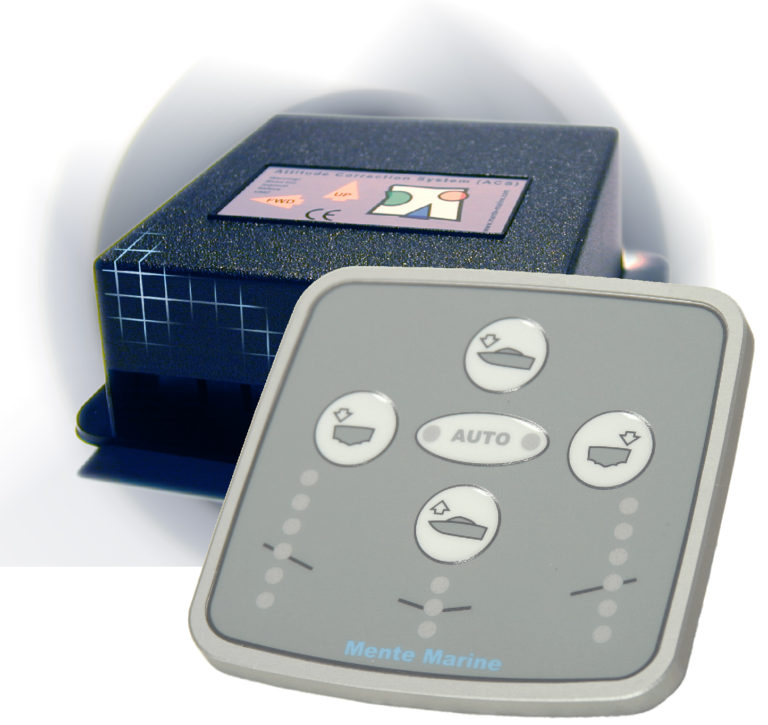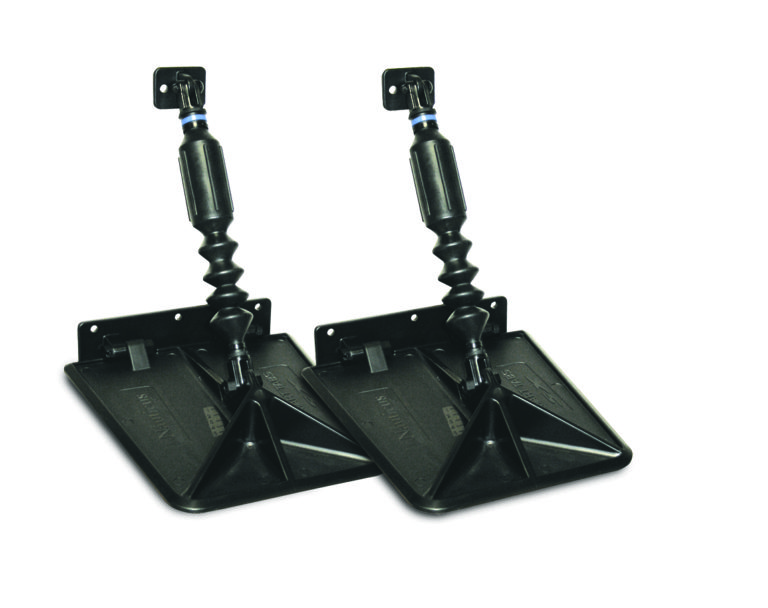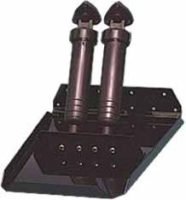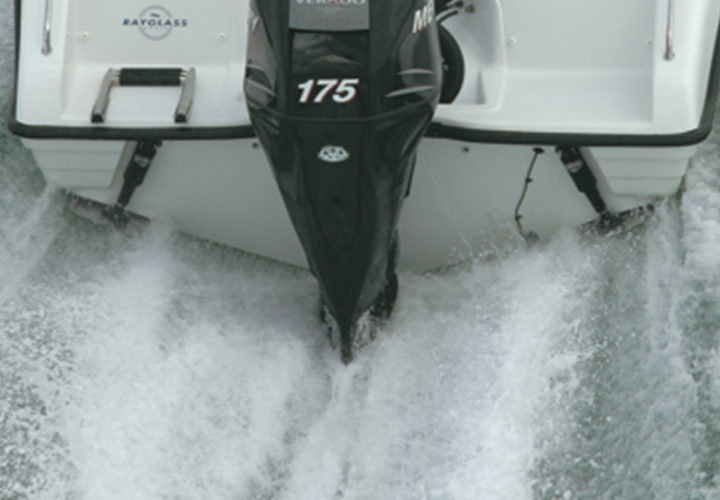Gone are the days of playing around with your trim buttons to get the boat’s attitude right. You can now leave it all to highly advanced electronic systems that do the thinking for you.

There is one thing that really upsets me it’s a boat that’s not trimmed right. If it’s not trimmed properly then chances are it isn’t giving you and your crew the best possible ride. It’s a misconception that boats need trim tabs only if they are not set up correctly in the first place. That may have been the case years ago before deep V and lightweight hulls came on the scene, but today, trim tabs do make a worthwhile difference to even the best-designed hulls. The boats that perhaps benefit most by the fitting of trim tabs are the larger production cabin boats of the 5 – 8 m variety that due to the very nature of their topside profile, lean (heel) into the wind. This is especially so with

Trim and Stabilisation Systems
www.volpower.co.nz
Ph 0800 865 769
The boats that perhaps benefit most by the fitting of trim tabs are the larger production cabin boats of the 5 – 8 m variety that due to the very nature of their topside profile, lean (heel) into the wind. This is especially so with hardtops, because the wind tends to blow any planing boat off course, and to hold course the boat must be steered into the wind. The fact that the helm is turned to keep the boat on course causes any planing hull that normally banks inwards when turning (i.e. all monohulls), to bank (heel) into the wind. Here you are, trying to drive across a short harbour chop with the boat heeling 20 deg to windward. As the boat is driven through the water, the tendency to flop onto one chine results in a harder ride, that is uncomfortable and also makes the whole rig harder to drive. You spend all your time trying in vain to correct the boat’s angle of heel through engine trim and throttle response.
Trimming a boat through the outboard or sterndrive will not stop heeling. But when used in a combination with trim tabs, it’s a different story and the result is more efficiency, performance and better overall handling. There are essentially four different systems available when it comes to adjusting the riding attitude of your hull, not counting outboard engine or stern drive leg trim. Firstly there is the most common and widely used, trim tab, that sees a hinged plate either side of the transom. Then there are the fully automatic of fixed self levelling systems, that
react instantly to water pressure and if you don’t want to fix anything to the transom then you can look at foils that bolt onto the outboard or sterndrive trim plate. In recent years we have seen another option, the interceptor, that brings a whole new dynamic to trim tab design.

How They Work


While there are many varieties of trim tabs, they all essentially do exactly the same job in adjusting the attitude of the boat. Trim tabs, no matter what design, are plates (foils, fixed, interceptors or hinged plates) mounted on the transom or outboard, that are forcibly lowered to deflect the water flow downwards, thereby providing upward lift or conversely lifted up to bring the bow up. Similarly, when the plates are set up for independent operation, the athwartships trim can be adjusted to favour one side by simply lowering one plate. As the starboard side trim tab is lowered, the starboard side lifts and consequently the portside drops and vice versa. However, the fore and aft trim component remains even if only one tab is used and so the hull will take on a pronounced diagonal bias to favour one bilge and drop the bow at the same time.
By utilising the various tab combinations a hull can be trimmed to best cope with the negative aspects of sea, wind or load conditions. Individual boats will require different amounts of tab to produce the best results, but always they should be used with finesse rather than brute ignorance. If the tab is lowered too far, its braking effect will be too pronounced, killing speed, sucking horsepower and throwing the hull completely out of balance. Generally the less tab that can be used the better. Knowing when your boat is trimmed correctly is simply a matter of feel and experience. What works for one doesn’t always work for another. Generally, if the horizon ahead is level and the water is peeling off the chines somewhere about under or just aft of your driving position, then you’re reasonably close. If there is a huge bow wave and you’re slamming into every wave, then back off and trim out a little – you will be surprised at the different ride you get, particularly with deep V boats. It is with smaller craft that most gains can be made, mainly because a changing sea, shifting passenger load or lessening fuel load will affect a small hull more than a larger one.
Interceptors – Same But Different
Interceptors are a very unique answer to the question of boat trim and while until recently were the domain of bigger boats (over 12m) they are now readily available and specifically designed for trailer boats. There are three brands of interceptors available in Australasia, and they all come from Sweden. Humphree, (also marketed through Volvo Penta as Interceptor), the first to commercially promote interceptor technology, Zipwake, who offer a broad range of units especially suitable for both cruisers and trailer boats and Volvo Penta with their Boat Trim System (BTS).

the interceptor blade is to create pressure underneath the hull, at the stern of the boat. The pressure is created when the blade is deployed into the water flow underneath the hull. Despite what you first might think there is only a minor deployment needed to create a large lift force under the hull. This lift will change the running trim of the vessel resulting in a lower wave resistance. The interceptor’s main function is to create a lift force in order to reduce the hull’s wave
resistance. The same function is generated by a traditional trim tab. With reduced wave resistance, the interceptor generates more lift force and less drag than trim tabs. The key to achieve good results is the speed of control. Traditional trim tabs are generally very slow as a result of the amount of water they need to push when deflecting the tab.

As such, the automatic functionality will suffer severely not being able to handle the motions in a safe and comfortable manner. Since the interceptor blade does not push away the water, it can move easy, allowing them to move much faster than trim tabs. All interceptor systems electric powered by 12-24 Volt DC. Thanks to the design of the Interceptor it only requires a small amount of power to move the blade up and down, even under high-speed operation. The Interceptor blade is controlled by an electronic actuator, which is designed too move the blade a full stroke as fast as 1 sec, which is considerably faster than conventional trim tabs. By their design they are lighter than most trim tabs can also integrate easier to the transom and in some cases can be custom shaped with a curve to follow the shape of the hull bottom.
That means it is possible to fit a trim system over a propeller tunnel or partly over the chine, as the shape of the interceptor can follow almost any hull curvature. In difference from most trim tab designs, the interceptors are constructed out of composite materials. This means that you get a light construction that has almost zero added mass and it also leaves out all worries regarding corrosion problems and the need of zinc anodes. Until recently interceptors have been traditional designed for larger vessels. Since 2001, when the Swedish company Humphree was formed, it has provided interceptor stabiliser systems for around 1,500 boats from 12m to 100m. However while the original Humphree series are offered in sizes from 350mm to 1500mm and various designs to fit hull shapes for boats from 12m to 200m+, they recently developed the X Series, a standardised interceptor for boats as small as 7.5m.
This new X Series features all the same auto trim, auto list, co-ordinated turn and active rode control of the larger Humphree systems. They are available in four standard sizes; 300mm, 450mm, 600mm and 750mm. The Volvo Penta Boat Trim System (BTS) caters for the smaller boat range and is recommended for boats 5m – 12m and for all drive systems including outboards. BTS is easy to manually operate from the control panel where the trim indicators show the position of the interceptor units. With the automatic option, you can furtherenhance both comfort and safety by just pressing the DzAdz button and the system automatically keeps the pre-set, preferred boat attitude. BTS interceptor units are available in two lengths, 300 mm ($NZ1308 plus gst) and 450 mm ($NZ1798 plus gst).

Another Swedish company, Zipwake also offers smaller units for trailer boats as well as larger cruisers. The Zipwake, Dynamic Trim Control System (DTCS) comes in four model sizes, suitable for planning and semi planning boats from 6m to 18m. One unique feature to Zipwake is they offer two alternatives for the cable through the transom, either above the waterline or concealed through the hull. The above waterline option is an important factor to consider when retrofitting the units to trailer boats with moulded or glassed in cockpit floors, making access difficult. Each Zipwake control panel is fitted with an internal GPS and equipped to read
additional GPS source information (NMEA2000 and NMEA0183). The Zipwake Dynamic Trim Control System will automatically use the source with the best information to trim the boat. While the system is fully automatic, it will also let the operator adjust the pitch and roll settings manually to compensate for variations in different conditions, such as load. Depending on the interceptor size (300mm – 750mm), Zipwake trim tabs range from $NZ2750 to $NZ3350 RRP.
Trim Tab Design

When trim tabs first arrived on the boating scene they were an all-manual affair. You simply set them up for what you felt would be the best attitude for the boat, by winding a worm-screw device. Hard to adjust underway, but you could always stop, re-adjust and carry on. Crude but effective! Then along came the manually operated hydraulic tabs, such as the Gibson and Blackwell, which relied on oil pressure to push the tabs down. These were all good, until an oil hose dislodged or split from the unit.
I can well remember the pressure on my arm when trying to hold down a set of Gibson tabs for nearly an hour during a particularly rough Auckland powerboat race. This also eventually proved too much for the lightly built plastic hydraulic lines, when one split, leaking hydraulic fluid all through the boat and us with no functioning tabs. Advancements were not only made in tab design, but also the mechanisms that operated them and today we have two main types of actuator mechanism in use -electro-mechanical and electro-hydraulic. The current electro-hydraulic systems are a development of the original hydraulic systems that mostly use a 12 volt reversing motor to drive a small high pressure hydraulic pump and oil reservoir in a self contained unit which mounts on the inside of the transom close to the trim tabs.
A short hydraulic line connects the pump to the ram, often through the ram base plate by way of a hole drilled in the transom. This means there are generally no external oil lines to catch or foul. The direction of the electric motor is controlled from the dash via the trim switches. Solenoids on the motor handle the heavy electrical switching so the wiring to the dash can be relatively light and easy to install. Electro-mechanical is basically an electric motor coupled to a worm drive. They are quick reacting, very positive and don’t creep. They will generally withstand greater loads than a hydraulic system.

Trim Tab Plate Size

The size of trim tab required depends on your boat, its performance and exactly what you want to achieve. A rule of thumb is that for an average 229 mm long (transom to trailing edge) plate, 2.5cm of tab width is needed for every 30cm of boat length (i.e. the tab width should be about 1/12 of the boat length). Plates are made from a variety of materials- cast aluminium alloy, fabricated stainless steel, GRP and even advanced composites. Likewise, ram sizes and the numbers required to activate a trim tab cannot be decided without knowing all the information,so buyers should be guided by a reputable supplier.
However, the stresses and strains a trim tab endures are enormous and incorrectly installed or supported plates will more than likely bend or break. Contrary to popular belief, the neutral position for a transom mounted trim tab is not when it is positioned to form a continuation of the planing surface, but when it is raised slightly to align with the flow of the water leaving the transom. As an extension of the planing surface the tab is still generating lift. When the tab is fully raised, air should flow in under the plate. Once this happens the tab ceases to exert any force and the hull is restored to its normal trim. The position of the tab, relative to the planing surface and the chine is critical so if you are going to fit them yourself, read the manufacturer’s instructions thoroughly.
Remember, as almost all outboards and sterndrives now have power trim, the primary reason for fitting trim tabs to boats powered by outboards or sterndrives is to more easily keep the boat from heeling into a cross-wind. Locating the tabs as far apart as possible minimises the amount of uplift force needed to correct for heel into a crosswind, and therefore minimises the downward angle needed on one tab, which in turn minimises the drag force incurred. Hence, the further apart the tabs can be fitted the better.

Doing the Thinking for You

It is not only the interceptors that are intelligent enough to do the trim adjustment for you, it’s also available on the standard trim tab. There are two types of self-levelling trim tabs, auto levelling and smart or fixed tabs, which are designed to do the thinking for you, but just they do it a different way and at a very different cost. Just about every manufacturer offers an auto levelling systems – Mente Marine, Insta Trim, Lenco, Bennett and Lectrotab, – that react to boat trim and balance and workmuch the same way as the interceptors by using sensors to detect your boat’s deviation and sends a continuous signal to the CPU.
The CPU is the brains of the system and this determines how the trim tabs should be adjusted, and communicates this corrective information to the master module. The on-board computer learns and stores the characteristics of the boat in its memory and uses this information for precise and efficient trim tab correcting. The most inexpensive system has to be the very simple fixed tab, such as the Bennett SLT and the Nauticus Smart Tab, which both self-regulate by reacting instantly to water pressure. These reasonably inexpensive tabs are designed for powerboats in the 3 m to 6 m range, are totally self-contained and don’t come with any of the baggage of hydraulic and electrical systems or console switches. Simple self-contained units that attach to the boat’s transom, they work with water pressure to adjust the boat’s attitude.
The tabs use a nitrogen-filled gas actuator, situated between the plate and connection point at the transom, to control trim. Just like a gas-controlled spring that expands to keep the tabs down while at rest or at low speeds, then as the speed and therefore water pressure increases, the plate pushes on the actuator and it retracts upwards. When the boat slows, the actuator extends the tab down again. It’s that simple! Whatever system you decide on, be it an interceptor or trim tab, or even something as simple as a fixed tab, they all work. Some perhaps work better than others and in the end it’s about finding one that suite your boat and of course your budget.





